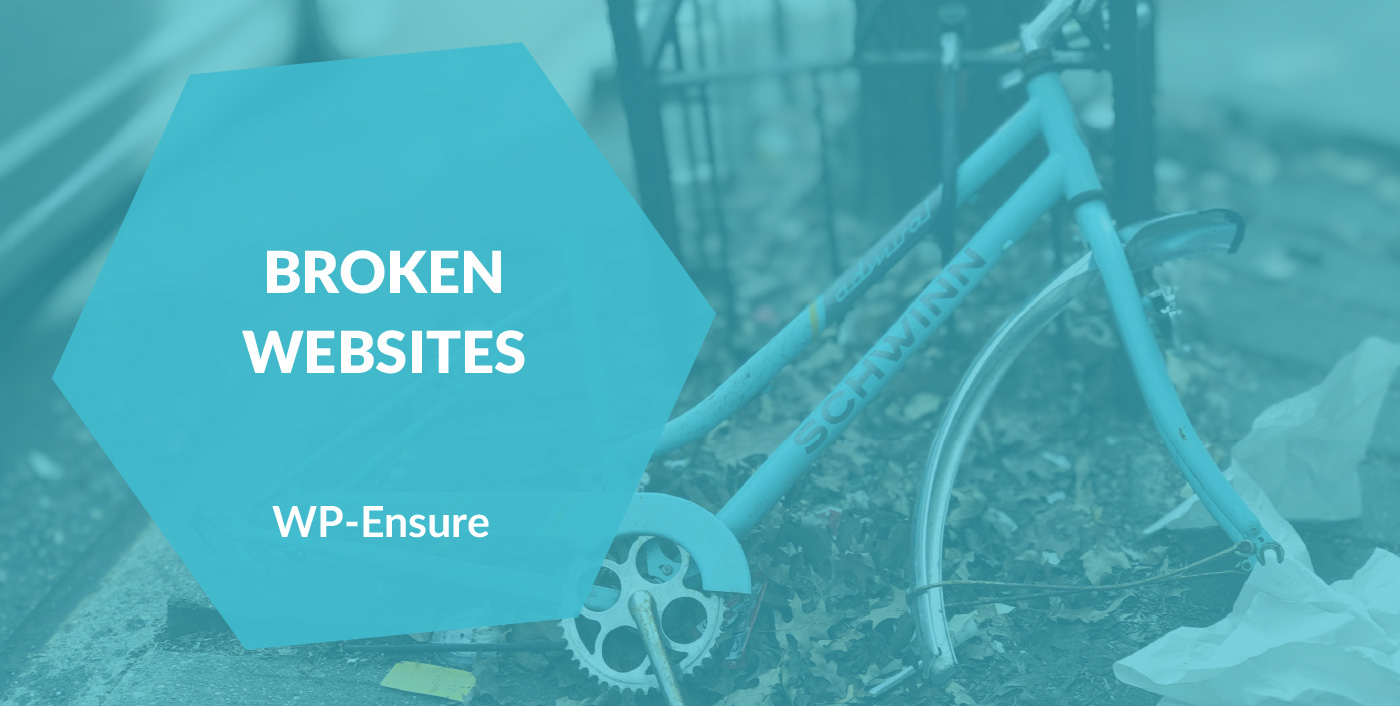
Websites and applications are always at risk from breaking whether through intentional defacing (security issues) or just run-of-the-mill updates and maintenance. Here are some pointers on making your website and application last the test of time.
1. Build it Well
If you want a website, e-commerce site, or other web application to have longevity, it all starts with how you build it. There are some common pitfalls you want to avoid. It’s worth making sure that when picking a web developer for a project, they are also thinking about the future.
The KISS principle is very much applicable here. The more plugins, the more they break. Custom themes have functionality built-in so you don’t need excess plugins. Plugins contain excess code and features you don’t need. This excess fluff affects security, speed, functionality, and also longevity.
2. Avoid Things That Break
Common breaking points for sites are:
- Ready-made themes. These tend not to age well. When using a ready-made theme, ensure it’s been alive and kicking for a few years and receives updates often.
- Page builders. Even if these are updated frequently (little and often), they still break sites more often than you’d like. Using a theme that uses native WordPress and Gutenberg blocks, is the best future-proof way to have a visual editor. It doesn’t have a ton of bells and whistles, but that can be extended with a good custom theme.
- WooCommerce and all its plugins. E-commerce sites need a lot of extra plugins for payment options and delivery options, as well as tailoring the site to your needs. Many of these plugins come and go. An experienced WooCommerce dev will pick a minimum of plugins and try to build the functionality into the theme. For example, you don’t need a plugin to change how the price is displayed, that can be coded in the theme or child theme.
- Multilingual issues. Plugins that add complex functionality such as multiple languages, can often break during updates. Daily (or hourly) backups are your friend here. Multilingual plugins often change core functionality such as permalinks and content itself. This makes it harder to simply roll back if there’s an issue, so often a good backup is the best way to restore the site.
- Third-party dependencies. A lot of code relies on third-party code such as plugins, libraries, Google Fonts, and outside integrations. These are common places for problems after updates as incompatibilities arise.
3. Maintenance
Updating little and often is the best approach to keeping your app running for 10 years. Big leaps in version numbers should be avoided. Small updates mean you know exactly what’s changed when the site breaks and can remove the offending plugin, restore a backup, or rollback when required.
Custom themes also require maintenance such as being updated to work with the latest stable PHP version. It’s a good idea to check in with your dev about once a year to see whether an update would be needed (server logs show depreciation errors and other issues that would be good to fix).
We can happily handle most of that for you, however…
4. It’ll Still Break Eventually
Even if you do all of the above, at some point it’ll break.
We ourselves are not immune even with 20 years of experience in WordPress. Recently we realised that the Gravity Forms Stripe integration hadn’t been working properly for about a week after updating server headers to make them more secure (also AJAX enabled forms have issues with some server headers FYI). That’s a good lesson in testing after updates (especially forms, checkout process, and any third-party integrations on the sites such as Hubspot, Salesforce, live chat, etc).
With experience, you learn what commonly fails, but as above, you can still be surprised by outliers. Regular manual testing is the key.
In Conclusion
Hopefully, this article gives you a few pointers on building a site or application with longevity in mind. Larger companies may enjoy revamping their website or apps every few years, but a good e-commerce solution or web application is a real investment for small and medium-sized companies. By starting out right, you can get the best bang for your buck.
Photo by Lance Grandahl on Unsplash




